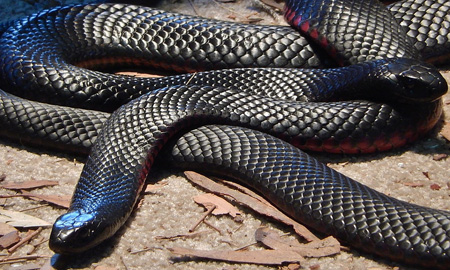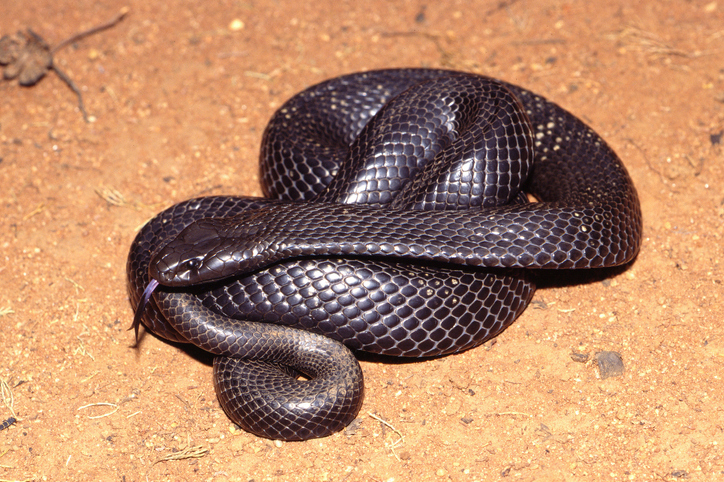Introduction
When it concerns poisonous serpents, Australia is home to several of the most fascinating and hazardous varieties worldwide. Among these, the Tiger Snake attracts attention not only for its powerful poison but likewise for its appealing actions. Understanding the habits of poisonous serpents like the Tiger Serpent is crucial for both wild animals lovers and those living in areas where these snakes exist. This write-up delves into various facets of Tiger Serpent behavior, habitat, identification, precaution, and first aid methods in instance of a snake bite.

Understanding the Actions of Venomous Snakes Like the Tiger Snake
The Tiger Snake, clinically known as Notechis scutatus, is infamous for its hostile nature when threatened. These snakes exhibit a variety of behaviors that can be fairly different from their non-venomous equivalents.
Characteristics of Tiger Snakes
The Tiger Serpent is quickly recognizable due to its distinctive bands or stripes that look like a tiger's markings. They can vary in color from yellowish-brown to dark olive or black. This coloration offers not just as camouflage however likewise as a warning signal to possible predators.

Adaptability to Environment
One amazing aspect of their habits is their versatility to various atmospheres. Discovered largely in seaside regions, marshes, and marshes throughout Australia and Tasmania, they can flourish in diverse environments consisting of metropolitan locations.
Hunting Techniques
Tiger Snakes are ambush predators largely feeding upon fish, frogs, and tiny creatures. They possess eager sight and an intense sense of smell which helps them in locating prey effectively.
Venom Composition
Their poison contains neurotoxins that impact the nerve system, bring about paralysis or death in smaller pets. For people, prompt medical attention is critical after a tiger serpent bite because of its potentially lethal effects.
Natural Environment of Tiger Snakes
Preferred Locations
Understanding where these serpents live clarify their behavior patterns. The tiger snake habitat includes:
- Coastal regions Swamps Grasslands Urban areas with abundant water sources
Seasonal Movements
During warmer months, Tiger Snakes are a lot more energetic as they indulge in sunlight or quest for food. In contrast, chillier months see them pulling back into Website link hibernation sites.
Are Tiger Snakes Venomous?
Yes! The question "are tiger snakes venomous?" frequently occurs amongst those unfamiliar with this types. Their venom is taken into consideration one of the most dangerous among all snake varieties worldwide.
Symptoms of a Tiger Snake Bite
If bitten by a tiger snake, symptoms may include:
- Localized pain Swelling at the bite site Nausea and vomiting Sweating and confusion
Immediate medical assistance is vital as without treatment attacks can lead to serious wellness Educating about venomous snakes issues or even death.
First Help for Serpent Bites: Quick Action Guide
Knowing exactly how to administer emergency treatment for a snake bite can save somebody's life. Right here's what you should do:
Step 1: Continue to be Calm
Keeping tranquility aids decrease heart price which lowers venom spread.
Step 2: Immobilize the Affected Area
Keep the influenced arm or leg still and listed below heart level if possible.
Step 3: Call Emergency Situation Services
Always seek expert medical aid immediately after a snake bite.

First Aid for Snake Bite Set Essentials
A well-equipped snake bite first aid kit must include:
- A compression bandage Antiseptic wipes A pair of scissors A cold pack
Safety Safety measures: Avoiding Serpent Bites in Australia
Awareness Programs
Educating neighborhoods regarding neighborhood serpent varieties and their habits can significantly decrease experiences leading to bites.
Avoiding Dangerous Areas
Staying away from lengthy turf throughout warmer months minimizes call with serpents that could be relaxing or hunting.
Common Mistaken beliefs Concerning Tiger Snakes
Many individuals believe mistaken beliefs about the actions of tiger serpents lead to unneeded fear. Below are some information:
Myth 1: All Tigers Are Aggressive
Not all tiger serpents will certainly display aggressiveness if left undisturbed; several favor getting away rather than confrontation.
Myth 2: They Chase Humans
Tiger serpents do not actively go after people; they may strike when they feel intimidated but will typically pull away if offered space.
Conservation Initiatives Connected to Venomous Snakes
Conservation efforts concentrate on informing communities regarding protecting regional wild animals while reducing human-snake interactions.
Importance of Ecosystems
Understanding that venomous snakes play an essential role in preserving environmental balance aids foster admiration as opposed to fear towards them.
FAQs Concerning Tiger Snakes
What should I do if I run into a tiger snake?- Maintain range and slowly pull back without unexpected movements.
- While attacks aren't very typical because of awareness efforts, they still occur annually within Australia.
- Baby tiger snakes can supply complete dosages of venom despite being smaller sized; for this reason care is encouraged around them.
- They mostly take in frogs, fish, tiny creatures like rats, and other reptiles.
- It's illegal in a lot of territories without appropriate licensing due to safety and security problems regarding their venom.
- Wear strong boots and remain on marked tracks; appearance prior to placing hands or feet into hidden spaces like rocks or logs.
Conclusion
Understanding the behavior of baby Tiger Snake venomous serpents like the Tiger Serpent not just boosts our knowledge but likewise promotes safety understanding amongst those living near their environments. From recognizing their features, recognizing emergency treatment procedures adhering to a bite, with engaging preservation initiatives-- every element plays a necessary role in promoting conjunction with these interesting reptiles while valuing their area within our ecosystem.
As we deepen our understanding with education and experience, we add positively towards making sure both human safety and wildlife preservation-- benefitting all parties involved!